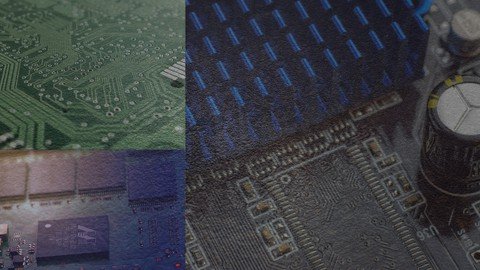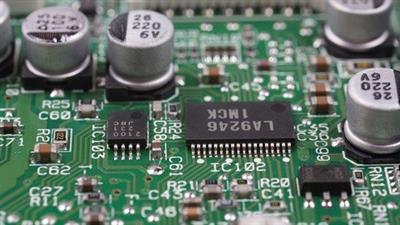Udemy - Undergraduate course on semiconductor device Physics-II
"softddl.org"
15-11-2021, 00:18
-
Share on social networks:
-
Download for free: Udemy -
-

MP4 | Video: h264, 1280x720 | Audio: AAC, 44.1 KHz
Language: English | Size: 2.91 GB | Duration: 2h 12m
Quantitative & Qualitative analysis of MOS capacitor, MOSFET and BJT

MP4 | Video: h264, 1280x720 | Audio: AAC, 44.1 KHz
Language: English | Size: 2.91 GB | Duration: 2h 12m
Quantitative & Qualitative analysis of MOS capacitor, MOSFET and BJT
What you'll learn
MOS Capacitor quantitative analysis
MOSFET quantitative and Qualitative treatment
BJT analysis
Mathematical understanding
Requirements
My previous course- "Undergraduate course on semiconductor device physics-II"
Description
This is an undergraduate course on semiconductor device physics. This course is the second part in a series of two courses on semiconductor device physics.
For any electronics student understanding transport phenomena of charge carriers, drift current, diffusion current, energy band theory of semiconductors, electron hole pairs(EHPs), Junction formation in a diode, extending the device physics to three terminal devices like BJT and MOSFET is necessary.
My previous course "undergraduate course on semiconductor device physics-I" is a prerequisite for complete understanding of this course.
Metal-Oxide-Semiconductor combination forms a capacitor and that capacitive action is to be understood well in terms of threshold voltage, CV characteristics. Though our major focus is on ideal MOS capacitor, non-idealities are also discussed up to some extent.
Based on the knowledge of MOS capacitor, if we look at the transport of charge carriers in a three terminal device MOSFET it gives a complete picture of all MOSFET transistor structures namely, enhancement MOSFET & depletion MOSFET in both p-type and n-type substrates. A MOSFET is explained up to threshold control.
Another transistor is Bipolar junction transistor(BJT). BJT characteristics and device parameters are explained with respect to input and output characteristics.
About Author:
Mr. Udaya Bhaskar is an undergraduate university level faculty and GATE teaching faculty with more than 15 years of teaching experience. His areas of interest are semiconductors, electronic devices, signal processing, digital design and other fundamental subjects of electronics. He trained thousands of students for GATE and ESE examinations.
Who this course is for:
Undergraduate students in electronics engineering, Communication engineering
Homepage
https://www.udemy.com/course/undergraduate-course-on-semiconductor-device-physics-ii/Buy Premium From My Links To Get Resumable Support,Max Speed & Support Me
https://hot4share.com/191mwb7cmn0d/ekso2.U.c.o.s.d.P.part1.rar.html
https://hot4share.com/zftc1uqomevh/ekso2.U.c.o.s.d.P.part2.rar.html
https://hot4share.com/c0gfsnmyb6oc/ekso2.U.c.o.s.d.P.part3.rar.html

https://uploadgig.com/file/download/eB0272d622df9595/ekso2.U.c.o.s.d.P.part1.rar
https://uploadgig.com/file/download/6868c23cDf28eF55/ekso2.U.c.o.s.d.P.part2.rar
https://uploadgig.com/file/download/bb955fd4dF11b6ae/ekso2.U.c.o.s.d.P.part3.rar

https://rapidgator.net/file/af15b8933a48006565cb49c3fa802178/ekso2.U.c.o.s.d.P.part1.rar.html
https://rapidgator.net/file/2bb43a7d51efc44ea5f2cdc0f3c00d04/ekso2.U.c.o.s.d.P.part2.rar.html
https://rapidgator.net/file/bb5989a82f738eb1303522ad67af0516/ekso2.U.c.o.s.d.P.part3.rar.html
Links are Interchangeable - No Password - Single Extraction
The minimum comment length is 50 characters. comments are moderated




